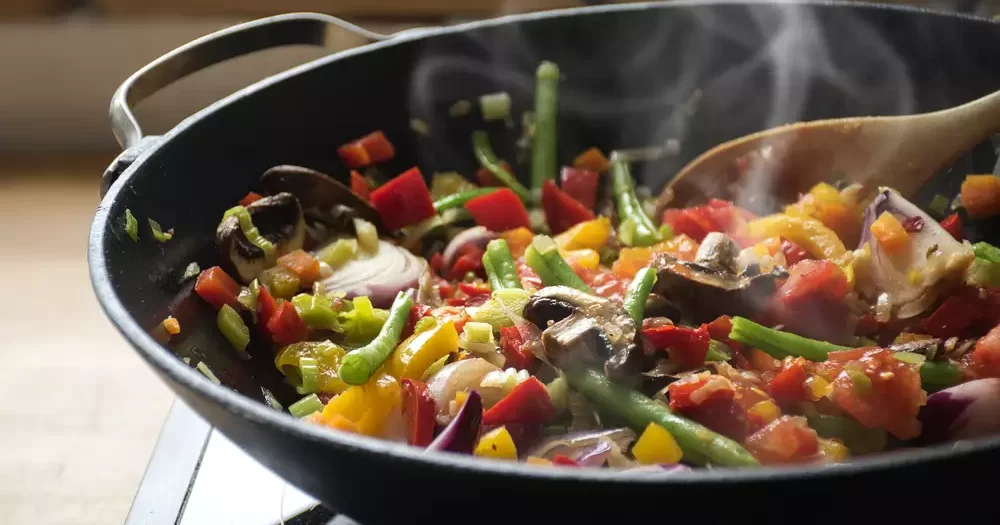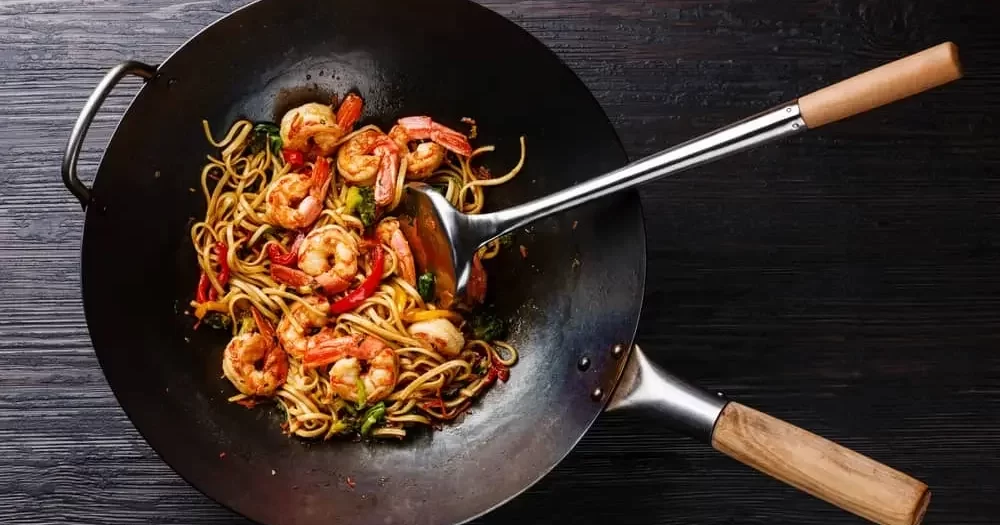Wok cooking has long been a favorite method for preparing delicious, healthy meals in Asian cuisine, and it has become increasingly popular in households and commercial kitchens worldwide. The unique shape of the wok allows for even heat distribution, making it perfect for various cooking techniques such as stir-frying, deep-frying, steaming, and simmering. To achieve the best results in wok cooking, it’s essential to understand the role of BTU (British Thermal Units) and how to choose the right heat output for your specific needs.
The ideal BTU range for wok cooking varies depending on factors such as the type of wok, the cooking technique, and the heat source. Generally, residential wok cooking requires a heat output of 12,000 to 20,000 BTU, while commercial wok cooking may need 30,000 to 100,000 BTU or more.
Discover the secrets of perfect wok cooking by mastering the art of BTU selection. Follow this comprehensive guide to understand BTU, explore the factors affecting your choice, and learn tips for optimizing heat output for various wok cooking techniques. Dive into the world of wok cooking and become a culinary expert in no time!
Understanding BTU
Definition of BTU
BTU stands for British Thermal Unit, a standard unit of measurement for heat energy. One BTU represents the amount of heat required to raise the temperature of one pound of water by one degree Fahrenheit. In the context of wok cooking, BTU measures the heat output of your stove or burner.
How BTU is measured
BTU ratings
BTU ratings are typically displayed on stoves, burners, and other cooking appliances. These ratings indicate the maximum heat output of the appliance and can help you determine its suitability for wok cooking.
Factors affecting BTU measurements
Various factors can affect BTU measurements, such as the efficiency of the appliance, the type of fuel used, and the altitude at which it is being used. Be aware of these factors when choosing an appliance to ensure optimal wok cooking performance.
The relationship between BTU and heat output
Higher BTU means higher heat output
A higher BTU rating indicates a higher heat output, which is necessary for achieving the high temperatures required for many wok cooking techniques. Higher heat output ensures faster cooking and helps to preserve the nutrients, flavors, and textures of your ingredients.
Balancing BTU and heat control
While high BTU is essential for successful wok cooking, it is equally important to have precise heat control. This allows you to adjust the heat according to the cooking technique and ingredients, ensuring perfectly cooked dishes every time.
Factors to consider when selecting BTU for wok cooking
Type of wok
Carbon steel
Carbon steel woks are lightweight, heat up quickly, and offer excellent heat distribution. They are ideal for high-heat cooking techniques like stir-frying and require a higher BTU range of 15,000 to 20,000 for residential use and 30,000 to 60,000 for commercial use.
Cast iron
Cast iron woks are heavier, take longer to heat up, but retain heat well. They are suitable for slower cooking methods such as simmering and steaming. A lower BTU range of 12,000 to 15,000 for residential use and 20,000 to 40,000 for commercial use is sufficient for cast iron woks.
Non-stick
Non-stick woks are convenient and easy to clean but are not suitable for high-heat cooking techniques. They typically require a lower BTU range of 10,000 to 12,000 for residential use and 15,000 to 30,000 for commercial use.
Size of wok
The size of your wok affects the heat output needed for effective cooking. Larger woks require more heat to maintain consistent temperatures across their surface. When selecting the BTU for your wok, consider the wok’s diameter and depth, and choose a heat output that matches the wok’s size and cooking requirements.

Cooking technique
Stir-frying
Stir-frying is a high-heat cooking technique that requires quick, even heat distribution. For residential wok cooking, a BTU range of 15,000 to 20,000 is recommended, while commercial wok cooking may require 30,000 to 60,000 BTU or more.
Deep-frying
Deep-frying in a wok requires maintaining a consistent oil temperature. For residential use, a BTU range of 12,000 to 18,000 is suitable, while commercial use may require 25,000 to 50,000 BTU.
Steaming
Steaming in a wok typically involves lower heat levels to maintain a consistent steam temperature. A BTU range of 10,000 to 12,000 for residential use and 15,000 to 30,000 for commercial use is recommended.
Simmering
Simmering in a wok requires gentle, consistent heat. A lower BTU range of 8,000 to 12,000 for residential use and 10,000 to 25,000 for commercial use is sufficient for this cooking technique.
Type of heat source
Gas burners
Gas burners provide direct, responsive heat and are ideal for wok cooking. Look for burners with high BTU ratings that allow for precise heat control.
Electric burners
Electric burners can also be used for wok cooking, although they may not provide the same level of heat control and responsiveness as gas burners. When using an electric burner, choose one with a high wattage to ensure sufficient heat output.
Induction cooktops
Induction cooktops are energy-efficient and provide precise heat control, but they require a flat-bottomed wok for optimal heat transfer. Induction cooktops typically have lower BTU ratings, so choose a cooktop with a high wattage to ensure adequate heat output for wok cooking.
Recommended BTU ranges for wok cooking
Residential use
For home cooking, a BTU range of 12,000 to 20,000 is generally suitable for most wok cooking techniques. This range provides sufficient heat for stir-frying, deep-frying, steaming, and simmering, while allowing for precise heat control.
Commercial use
In a commercial setting, a higher BTU range of 30,000 to 100,000 or more may be necessary to meet the demands of high-volume wok cooking. This range ensures fast, efficient cooking and can accommodate various cooking techniques and ingredients.
Adjusting BTU for different cooking techniques
When using different cooking techniques, you may need to adjust the heat output to achieve the best results. For example, when stir-frying, you may need to increase the BTU to ensure quick, even heat distribution. On the other hand, when simmering, you may need to lower the BTU to maintain a gentle heat level.
Tips for optimizing BTU for wok cooking
Preheating the wok
Before cooking, preheat your wok on medium-high heat for 1-2 minutes, allowing the heat to spread evenly across the wok’s surface. This helps to prevent sticking and ensures that your ingredients cook quickly and evenly.
Managing heat during cooking
During the cooking process, adjust the heat as needed to achieve the desired cooking temperature. Be attentive to the heat level, and don’t be afraid to increase or decrease the BTU as needed to ensure optimal cooking results.
Properly maintaining your wok
Proper wok maintenance is essential for maintaining optimal heat performance. Regularly clean and season your wok to protect its surface and enhance heat conductivity. A well-maintained wok will ensure consistent heat distribution and make it easier to control the cooking temperature.

Safety considerations when using high BTU for wok cooking
Ventilation
High BTU cooking generates more heat and may produce more smoke or steam. Ensure proper ventilation in your cooking area to prevent the buildup of heat, smoke, or steam, which can be hazardous.
Flame control
When cooking with high BTU, it’s essential to have precise flame control to prevent flare-ups or accidents. Always monitor the flame and adjust it as needed to maintain a safe cooking environment.
Using appropriate cookware
Choose cookware designed for high-heat cooking, such as woks made from carbon steel or cast iron. Avoid using non-stick or thin-walled woks, which may not be able to withstand the high temperatures generated by high BTU cooking.
FAQs
What is the minimum BTU needed for effective wok cooking?
For residential wok cooking, a minimum of 12,000 BTU is typically sufficient for most cooking techniques. However, some high-heat techniques like stir-frying may require a higher BTU range.
Can I use a wok on an electric stove?
Yes, you can use a wok on an electric stove, but ensure that the wok has a flat bottom for optimal heat transfer. Choose an electric burner with a high wattage to provide sufficient heat output for wok cooking.
How do I know if my burner has enough BTU for wok cooking?
Check the manufacturer’s specifications for the BTU rating of your burner. Ensure that the rating falls within the recommended BTU range for your wok type, size, and cooking technique.
Conclusion
Selecting the right BTU for wok cooking is crucial for achieving perfectly cooked, flavorful dishes. By understanding the relationship between BTU and heat output, considering factors such as wok type, size, cooking technique, and heat source, and following our tips for optimizing BTU, you’ll be well-equipped to master the art of wok cooking.
Whether you’re a home cook or a professional chef, understanding the nuances of BTU selection will elevate your wok cooking skills and impress your guests with mouthwatering, restaurant-quality dishes. Now, go forth and conquer the world of wok cooking with confidence and expertise!


